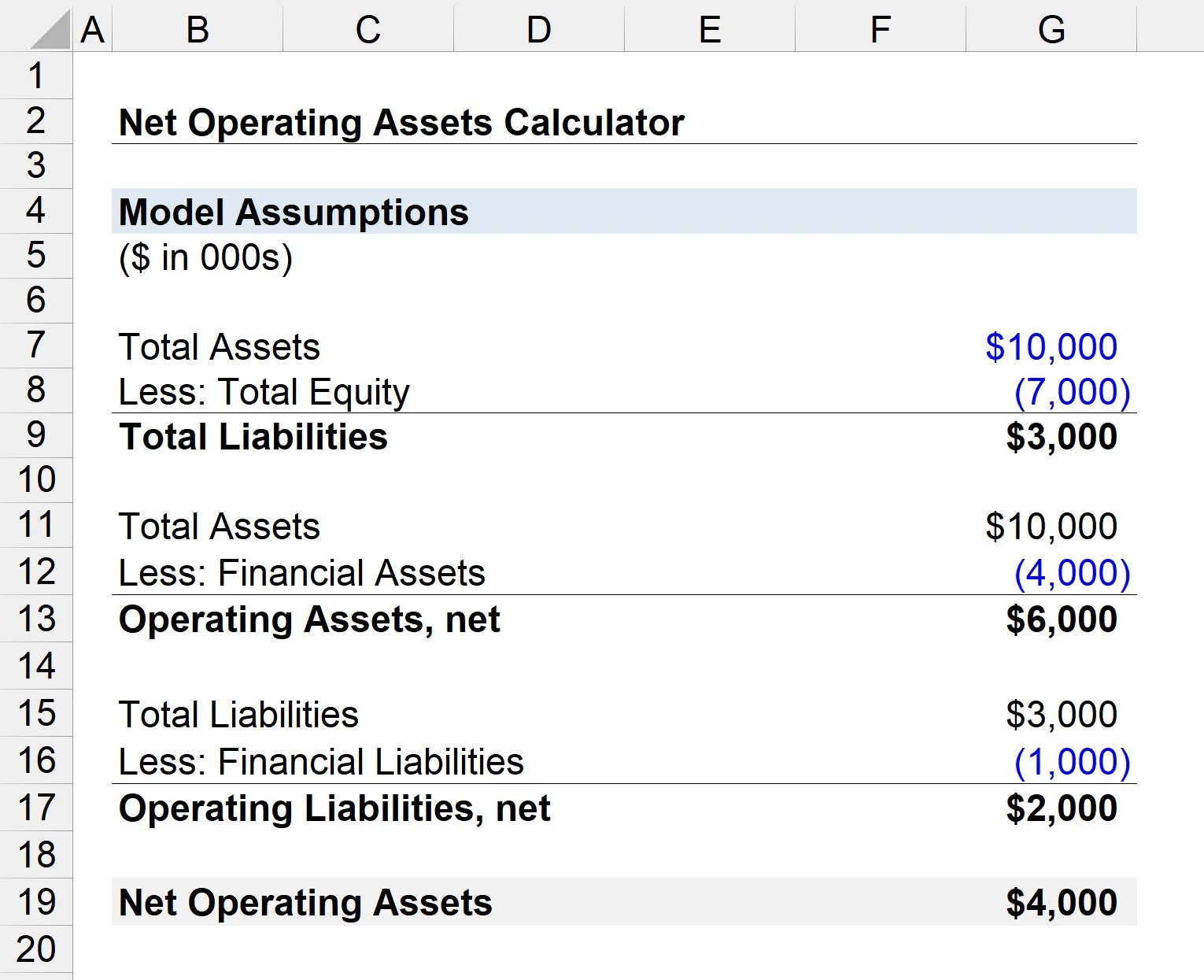

Finance
What Is Netting In Accounting
Published: October 7, 2023
Discover the concept of netting in accounting and its significance in financial transactions. Understand how netting can streamline financial processes and enhance efficiency in finance.
(Many of the links in this article redirect to a specific reviewed product. Your purchase of these products through affiliate links helps to generate commission for LiveWell, at no extra cost. Learn more)
Table of Contents
Introduction
Netting is a fundamental concept in the field of accounting that plays a crucial role in financial transactions and reporting. It involves offsetting the value of financial instruments or obligations to determine the net amount owed or receivable. This process helps streamline and simplify financial operations while providing a more accurate representation of a company’s financial position.
In accounting, netting serves as a mechanism to consolidate and reconcile various financial obligations, such as debts, credits, or contractual commitments. By combining similar but opposite values, netting allows businesses to minimize their financial exposure and present a more realistic picture of their financial health.
The principle of netting is applicable to multiple areas within the accounting domain, including trade receivables and payables, derivatives, and intercompany transactions. By consolidating these transactions and offsetting opposing balances, netting enables companies to reduce the complexity and volatility associated with multiple financial transactions.
Moreover, netting is not limited to a single entity but can also be applied between different entities within the same group of companies. This form of netting is known as intercompany netting and is deployed to manage and consolidate financial obligations within a corporate group, resulting in more effective liquidity management and reduced financial risk.
In summary, netting is a crucial accounting concept that allows companies to consolidate and offset their financial transactions, resulting in a more accurate financial representation and improved financial management. Through the utilization of netting, companies can simplify their financial operations, reduce financial risk, and make more informed business decisions.
Definition of Netting in Accounting
In accounting, netting refers to the process of offsetting the value of financial instruments, obligations, or balances to determine a net amount. It involves consolidating and combining similar but opposite transactions to simplify financial operations and provide a more accurate representation of an entity’s financial position.
Netting is commonly used to streamline and reconcile various financial obligations, such as trade receivables and payables, derivatives, and intercompany transactions. By offsetting opposing values, companies can minimize their financial exposure and eliminate redundant transactions, resulting in a more concise and transparent financial statement. Additionally, netting allows businesses to assess their net financial position more accurately by considering both positive and negative balances.
There are different types of netting methods used in accounting, including payment netting, settlement netting, and position netting.
- Payment Netting: Payment netting involves offsetting the amounts payable and receivable between two parties to determine the net amount that needs to be settled. This is commonly used in trade transactions where multiple invoices or payments are involved.
- Settlement Netting: Settlement netting is used to offset the obligations arising from multiple financial transactions between two parties. This netting method is often utilized in derivative contracts, where gains and losses are reconciled to determine the net amount that needs to be settled.
- Position Netting: Position netting involves consolidating and offsetting the positions or holdings of financial instruments or obligations to determine the net exposure. This is commonly used in risk management to assess the overall risk associated with a portfolio or group of positions.
Netting can be implemented within a single entity or between entities within the same corporate group. In the case of intercompany netting, companies can consolidate their financial obligations across subsidiaries or affiliated entities, resulting in more efficient cash management and reduced financial risk within the group.
Overall, netting plays a crucial role in accounting by simplifying financial operations, reducing complexity, and providing a more accurate representation of an entity’s financial position. By implementing netting methods, businesses can enhance financial transparency, improve risk management, and make more informed financial decisions.
Uses of Netting in Accounting
Netting is a versatile concept in accounting that serves various purposes and provides numerous benefits to businesses. The following are some of the key uses of netting in accounting:
- Consolidation of Receivables and Payables: Netting allows companies to consolidate their trade receivables and payables, simplifying the process of tracking and settling outstanding invoices. By offsetting the amounts owed and due, businesses can streamline their cash flow management and reduce the number of individual transactions.
- Management of Derivatives: Financial derivatives, such as futures contracts, options, and swaps, often involve complex transactions with multiple settlement obligations. Netting enables the offsetting of gains and losses from these derivatives, resulting in a more accurate assessment of financial exposure and simplification of settlement processes.
- Intercompany Transactions: In a corporate group setting, netting allows entities within the group to offset their financial obligations with each other. This simplifies the process of settling intercompany transactions and improves liquidity management within the group.
- Risk Management: Position netting is widely used for risk management purposes. By consolidating positions or holdings of financial instruments, businesses can assess their net exposure to different types of risks, such as market volatility or interest rate fluctuations. This enables more effective risk mitigation and informed decision-making.
- Improvement of Financial Statements: Netting plays a crucial role in presenting accurate financial statements. By offsetting opposing balances and eliminating redundant transactions, netting provides a clearer representation of a company’s financial position. This enhances the transparency and reliability of financial statements, enabling stakeholders to make more informed assessments of the company’s financial health.
- Reduced Financial Risk: By offsetting obligations and consolidating transactions, netting helps businesses reduce their financial risk. It minimizes the exposure to potential losses, simplifies cash flow management, and enhances overall financial stability. This is particularly beneficial in volatile market conditions or during economic downturns.
Overall, netting is a valuable tool in accounting that is widely used for simplifying financial processes, improving risk management, and enhancing the accuracy of financial reporting. Its applications extend across various aspects of financial operations, allowing businesses to streamline their processes, reduce complexity, and make better-informed financial decisions.
Types of Netting in Accounting
Netting in accounting can be classified into various types based on the specific financial transactions and obligations being offset. The following are some common types of netting used in accounting:
- Payment Netting: Payment netting involves offsetting the amounts payable and receivable between two parties. It is commonly used in trade transactions where multiple invoices or payments are involved. By netting the amounts, companies can simplify the settlement process and reduce the number of individual payments.
- Settlement Netting: Settlement netting is used to offset the obligations arising from multiple financial transactions between two parties. This type of netting is often implemented in derivative contracts such as futures, options, or swaps. By consolidating gains and losses, settlement netting allows companies to determine the net settlement amount, thereby simplifying the settlement process.
- Position Netting: Position netting involves consolidating and offsetting the positions or holdings of financial instruments or obligations. This type of netting is commonly used in risk management to assess the overall risk associated with a portfolio or group of positions. By netting positions, businesses can have a clearer understanding of their net exposure to various types of risks, such as market volatility or interest rate fluctuations.
- Intercompany Netting: Intercompany netting is the process of consolidating and offsetting financial obligations within a corporate group. It allows entities within the group to offset the amounts owed or due to each other, simplifying the settlement of intercompany transactions. Intercompany netting helps improve cash flow management and reduces the need for external financing within the group.
- Cross-Currency Netting: Cross-currency netting involves offsetting the amounts owed or due in different currencies. It is commonly used in international transactions to simplify the settlement process and reduce foreign exchange risks. By netting the amounts, companies can minimize the need for currency conversions and potentially reduce transaction costs.
- Netting of Revenues and Expenses: This type of netting involves offsetting revenues and expenses within an accounting period. It is typically used to determine the net profit or loss for a specific period. By netting revenues and expenses, companies can present a clearer picture of their financial performance and assess the overall profitability.
Each type of netting serves a specific purpose in accounting and is applied based on the nature of the financial transactions and obligations being offset. By utilizing the appropriate netting method, businesses can streamline financial processes, reduce complexity, and obtain a more accurate representation of their financial position.
Netting in Financial Statements
Netting plays a significant role in the preparation of financial statements as it allows for a more accurate representation of an entity’s financial position and performance. It helps consolidate and offset various financial transactions, resulting in clearer and more concise financial statements. The following are key aspects of netting in financial statements:
Consolidation of Balances: Netting allows for the consolidation of similar but opposite balances within the financial statements. For example, trade receivables and payables can be netted to reflect the net amount owed or due from customers and suppliers. By presenting net balances, financial statements provide a more accurate picture of a company’s overall financial position.
Offsetting of Gains and Losses: Netting is used to offset gains and losses resulting from various financial instruments or transactions. For instance, in derivative contracts, such as futures or options, gains can be offset against losses to determine the net result. This netting of gains and losses helps present a more meaningful and accurate financial statement.
Simplification of Statement Presentation: By implementing netting in financial statements, companies can simplify the presentation of their financial data. Rather than displaying individual transactions or balances, netting allows for the consolidation of similar items, reducing complexity and enhancing the readability of the financial statements.
Improved Financial Analysis: Netting in financial statements enables stakeholders to analyze the financial performance of a company more effectively. By presenting net amounts, it is easier to assess the overall financial health, profitability, and liquidity of the entity. Netting also helps in identifying trends and patterns in financial data, aiding in informed decision-making.
Enhancement of Financial Transparency: Netting brings greater transparency to financial statements by eliminating redundant transactions and presenting a clearer picture of financial position and performance. It allows stakeholders to understand the net impact of various transactions and obligations, providing a more accurate assessment of the company’s financial health.
Compliance with Accounting Standards: Netting in financial statements is guided by accounting standards such as International Financial Reporting Standards (IFRS) and Generally Accepted Accounting Principles (GAAP). These standards provide guidelines and principles for the appropriate application of netting, ensuring consistency and comparability in financial reporting.
In summary, netting in financial statements facilitates the consolidation, offsetting, and simplification of various transactions and balances. It improves the accuracy and transparency of financial reporting, enhances financial analysis, and ensures compliance with accounting standards. By utilizing netting techniques, companies can present a comprehensive and accurate portrayal of their financial position and performance in their financial statements.
Advantages of Netting in Accounting
Netting in accounting offers several advantages to businesses, helping them streamline financial operations, reduce complexity, and enhance overall financial management. The following are key advantages of netting in accounting:
1. Simplified Financial Operations: Netting allows companies to consolidate and offset similar but opposite financial transactions or obligations. This simplifies the settlement process, reduces the number of individual transactions, and streamlines financial operations. It saves time and resources by eliminating the need to track and manage multiple separate transactions.
2. Accurate Financial Representation: By netting opposing balances, netting provides a more accurate financial representation. It allows companies to present net positions, reflecting the true financial position by considering both positive and negative balances. This accuracy enhances the transparency and reliability of financial statements.
3. Reduced Financial Exposure: Netting helps minimize financial exposure by offsetting obligations or positions. It reduces the risk of losses by combining offsetting positions or obligations, resulting in a net exposure that is typically lower than the gross exposure. This risk reduction is particularly beneficial in volatile market conditions.
4. Efficient Cash Flow Management: Netting enables efficient cash flow management by consolidating and offsetting receivables and payables. It simplifies the settlement process, allowing for the netting of multiple invoices or payments. This improves cash flow forecasting and reduces the need for external financing.
5. Enhanced Risk Management: By consolidating positions or holdings, netting helps companies assess their overall risk exposure. It allows for a comprehensive view of risk, simplifying risk management strategies and facilitating informed decision-making. Netting helps businesses effectively manage market, credit, and operational risks.
6. Improved Intercompany Coordination: In a corporate group setting, netting enables entities within the group to offset their financial obligations. This promotes efficient coordination and liquidity management within the group. It reduces the need for external financing and can lead to cost savings.
7. Streamlined Financial Reporting: Netting simplifies financial reporting by consolidating similar transactions and balances. It reduces complexity and presents a clearer picture of the financial position and performance. This streamlining enhances the readability and understandability of financial statements for stakeholders.
8. Cost Savings: Netting can result in cost savings for businesses. By reducing the number of individual transactions or settlements, companies can save on transaction costs, administrative expenses, and financing charges. This contributes to overall cost optimization.
Overall, netting in accounting provides numerous advantages, including simplified financial operations, accurate financial representation, reduced financial exposure, efficient cash flow management, enhanced risk management, improved intercompany coordination, streamlined financial reporting, and potential cost savings. By incorporating netting techniques, businesses can optimize their financial processes, enhance decision-making, and achieve greater financial stability.
Disadvantages of Netting in Accounting
While netting offers several advantages in accounting, it is important to be aware of the potential disadvantages as well. Understanding these drawbacks can help businesses make informed decisions when implementing netting strategies. The following are key disadvantages of netting in accounting:
1. Complexity of Implementation: Netting can be complex to implement, especially in multinational companies with multiple currencies, diverse accounting systems, and different legal and regulatory requirements. The process of aligning and consolidating various financial transactions and obligations can be challenging and may require significant resources and expertise.
2. Potential Accuracy Issues: Netting relies on accurate and complete data to correctly offset financial transactions or balances. Inaccurate or incomplete data can result in errors and misrepresentation of financial positions. Ensuring data integrity and accuracy is critical for the effective implementation of netting.
3. Risk of Errors: Errors in netting can occur during the consolidation or offsetting process. If errors go unnoticed, they can lead to incorrect financial representations and misreporting. It is important to have robust controls and reconciliation procedures in place to minimize the risk of errors.
4. Impact on Financial Ratios: Netting can distort financial ratios by offsetting certain transactions. This can make it challenging for stakeholders, such as investors or creditors, to analyze and compare financial performance accurately. It is crucial to provide transparent explanations and disclose any significant netting activities in financial statements.
5. Regulatory and Compliance Considerations: Netting may involve compliance with specific accounting regulations and standards, such as International Financial Reporting Standards (IFRS) or Generally Accepted Accounting Principles (GAAP). Failure to adhere to regulatory requirements can result in non-compliance and associated penalties. It is essential to stay updated on the applicable regulations and ensure proper compliance.
6. Potential for Hidden Liabilities: While netting can offset certain obligations, it may not eliminate them entirely. There is a risk of hidden liabilities as netting may not consider contingent or unknown liabilities. Businesses must carefully evaluate and disclose any potential hidden liabilities that may not be fully offset through netting.
7. Intercompany Complexity: Intercompany netting, while beneficial for consolidating financial obligations within a corporate group, can introduce additional complexity. Coordinating netting activities among multiple entities, managing transfer pricing implications, and ensuring compliance can be challenging and time-consuming.
8. Dependency on Market Conditions: Netting activities, particularly those involving derivatives or risk management, are dependent on market conditions. Volatility, fluctuations in prices, or unforeseen events can impact netting results and introduce additional financial risk. Businesses need to monitor market conditions and reassess netting strategies accordingly.
Despite these disadvantages, netting remains a valuable tool in accounting. Businesses should carefully assess their specific circumstances, weigh the pros and cons, and implement effective controls and procedures to mitigate any potential risks and challenges associated with netting.
Examples of Netting in Accounting
Netting is a versatile concept in accounting and is applied across various financial transactions and obligations. Here are some examples of netting in different accounting scenarios:
Trade Receivables and Payables: Netting is commonly used in trade transactions to offset receivables and payables between two parties. For example, if Company A owes $10,000 to Company B and Company B owes $7,000 to Company A, netting allows the two companies to offset their obligations and settle only the net amount of $3,000.
Intercompany Netting: In a corporate group setting, entities often engage in intercompany transactions. Netting allows the consolidation and offsetting of these obligations within the group. For instance, if Subsidiary A owes $50,000 to Subsidiary B, and Subsidiary B owes $30,000 to Subsidiary A, netting enables the elimination of these intercompany payables, resulting in a net amount of $20,000.
Settlement Netting in Derivatives: Companies engaging in derivative contracts, such as futures or options, often use netting to simplify settlement obligations. For example, if a company has gains of $5,000 from one derivative contract and losses of $3,000 from another, netting allows for the offsetting of these gains and losses, resulting in a net gain of $2,000.
Payment Netting: Payment netting is commonly used to simplify the settlement process in multiple invoice scenarios. For instance, if a customer has multiple outstanding invoices totaling $10,000, and the company owes the same customer $6,000, netting allows for the offsetting of these amounts, resulting in a net payment of $4,000.
Position Netting for Risk Management: Position netting is used in risk management to assess overall risk exposure. For example, a company might have multiple positions in different financial instruments, such as stocks, bonds, and currencies. By netting these positions, the company can evaluate its net exposure to market fluctuations and make informed risk management decisions.
Cross-Currency Netting: When dealing with international transactions and multiple currencies, cross-currency netting helps simplify settlement and minimize foreign exchange risks. For example, if a company owes $100,000 to a foreign supplier in one currency and the same supplier owes the company $80,000 in another currency, netting allows for the offsetting of these amounts, reducing the need for currency conversion and potentially saving on transaction costs.
These examples illustrate the versatility and applications of netting in accounting. By offsetting, consolidating, and simplifying financial transactions and obligations, netting contributes to more efficient financial operations, enhanced risk management, and improved financial reporting and analysis.
Conclusion
Netting plays a pivotal role in the field of accounting, allowing businesses to consolidate, offset, and simplify financial transactions and obligations. It offers numerous advantages, such as streamlining financial operations, providing accurate financial representation, reducing financial exposure, and enhancing risk management. Netting is employed in various areas of accounting, including trade receivables and payables, derivative contracts, intercompany transactions, and risk assessment.
Through netting, companies can consolidate balances, offset gains and losses, simplify cash flow management, and present more transparent financial statements. It streamlines financial operations, reduces complexity, and enhances overall financial management. Moreover, netting contributes to improved liquidity management within corporate groups, efficient intercompany coordination, and potential cost savings.
However, it is important to be aware of potential disadvantages, such as complexity of implementation, accuracy issues, and the impact on financial ratios. Businesses must ensure compliance with accounting standards, manage hidden liabilities effectively, and consider the potential dependencies on market conditions.
In summary, netting is a powerful tool that helps businesses achieve improved financial transparency, better risk management, and streamline financial operations. By understanding the types, uses, advantages, and disadvantages of netting in accounting, companies can make informed decisions on its utilization. With careful planning and implementation, netting can effectively enhance financial reporting, mitigate risk, and optimize financial operations.














